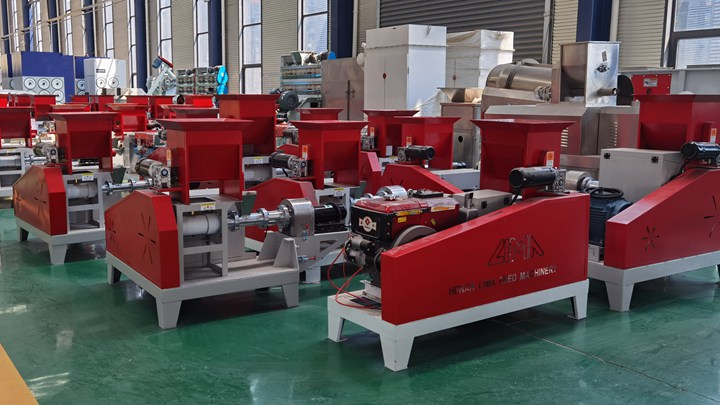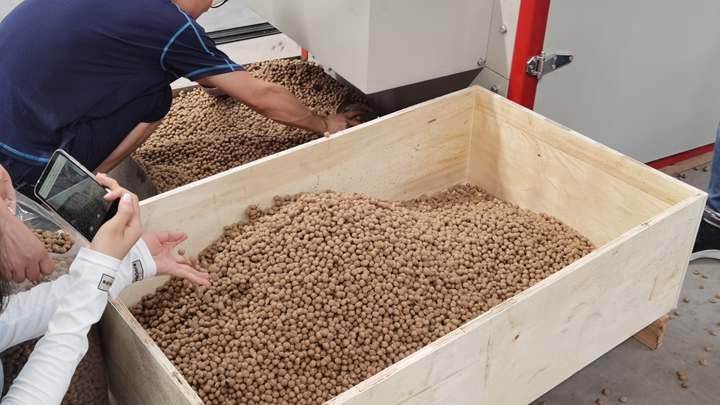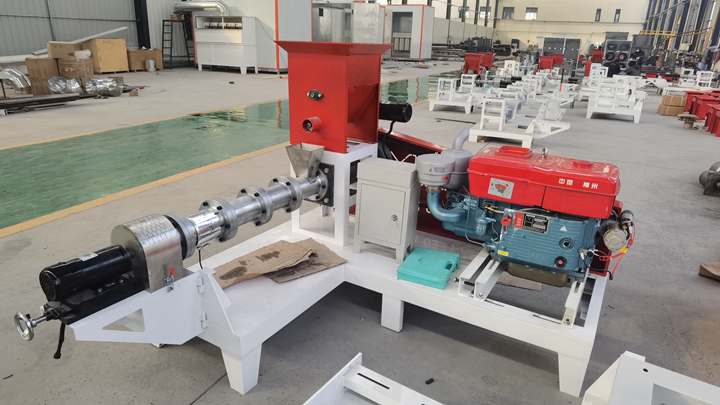
Animal Feed Pellet Project in Bangladesh The use of aquaculture feeds in Bangladesh has grown substantially in the past few years, and now over 1 million tonnes of commercial pelleted feed are being formulated for use by aquaculture farmers. Feed Pellet Production and Trends in Bangladesh
.jpg)
New feed mill planned in Costa Rica for tilapia feed productionACI’s Rain Forest brand is one of the most recognized brands in the industry. With the new Joint Venture BioMar will Tel: 8619337889051
.jpg)
Diesel floating fish feed machine is widely used to produce high-grade aquatic feed pellets such as fish, catfish, shrimp, crab and so on. It has become the ideal equipment for small and medium-sized fish farms and fish feed processing plants. Diesel Engine Fish Feed Machine Read More » Fish Feed Production Line
.jpg)
Automatic Fish Farm Feeder Fish Feed Machine Price In Bangladesh , Find Complete Details about Automatic Fish Farm Feeder Fish Feed Machine Price In Bangladesh,Fish Feed Pellet Machine Price,Fish Feeder Aquarium,Auto Feeder from Aquaculture Machine Aerators Supplier or Manufacturer-Zhengzhou Chenyue Machinery Equipment Co., Ltd. MENU
.jpg)
2022/07/15 · 31 July 2020, at 2:00pm. A recent review in Aquaculture and Fisheries has tracked two decades of expansion in Bangladesh’s fishery and aquaculture industries and linked it to the country’s overall economic growth, suggesting that additional investment could boost Bangladesh’s economy.
.jpg)
wet type Feed Plant Tilapia in bangladesh-Feed pellet Machine 0.8mm -12mm Floating fish feed machine price in bangladesh wet type fish feed machinery extruder line for catfish Tilapia in Zhengzhou, China ‹ › Contact the seller for additional photos and information. 5 Location: Price: $16,590
.jpg)
Aug 25, 2018 · These commercial fish feed manufactured by fish feed pellet machine are marketed in packed condition and used mainly in commercial fish farms. And compared with home-made fish feed, the advantages of using commercially manufactured fish feed pellet are: uniformity with regard to quality; nutrient balance for maximum growth

Fish Feeds and Production Machine in Bangladesh – Fish Feed. Non-oil coated feeds account for 95% of total sales. Feed prices increased at a rate of between 9 and 15% per year from 2008 to 2012, due to increases in the price of major raw materials and unavailability.
.jpg)
Oct 19, 2015 · Malaysia Fish Feed Market Trend-Fish Feed Pellet Machine Dec 3, 2020 Main Measures to Reduce Economic Loss of Aquaculture Under The COVID-19 Epidemic Situation
.jpg)
200-300kg/h fish feed production line | fish feed making plantDec 02, 2021 · The fish feed production line is a machine for producing fish food, which can produce feed pellets fo Tel: 86 19337889085 Email:sale@limamachinery.com

supplier Salmon fish feed pelletizer bangladesh- Lima Fish supplier Salmon fish feed pelletizer bangladesh Floating Fish feed pellet machine using for aquaculture and animal husbandry. For example: catfish、Tilapia fish 、dog、tortoises、frogs and so on. Just change mould can make many different shape and size.
.jpg)
Bangladesh Feed Pellet Plant/Feed Pellet Production and Trends Animal Feed Pellet Project in Bangladesh The use of aquaculture feeds in Bangladesh has grown substantially in the past few years, and now over 1 million tonnes of commercial pelleted feed are being formulated for use by aquaculture farmers.
.jpg)
A fish feed extruder machine costs between $1,680 and $9,650. What can we offer? We offer high-quality floating fish food machine (30 to 2000kg/h) as well as custom project plan (production output of up to 5 tons/hour). Feed Pellet Size: 0.9-15mm. For those who want to produce high-quality fish food pellets, the dry type fish feed extruder can
.jpg)
Fish feed extruder machine is widely used in making both floating fish feed and sinking feed pellets for aquaculture farms and feed plants. Through the fish feed extruder we can use cheap local raw materials to produce high-quality fish feed, which may save feed costs.

PELLETING. The transformation of a soft, often dusty feed into a hard pellet is accomplished by compression, extrusion, and adhesion. The general process involves passing a feed mixture through a conditioning chamber where 4 to 6 percent water (usually as steam) may be added.